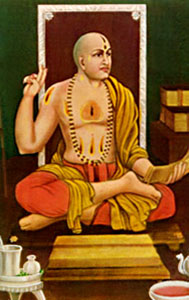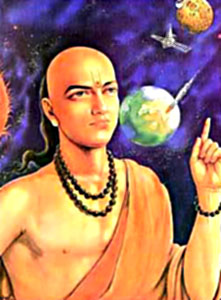 Ancient Indian Mathematics is synonymous with Vedic Mathematics. In ancient Indian Mathematics just with the help of 16 sutras and 16 upasutras one is able to solve the most complex problem of mathematics even mentally. The basic root of Vedic Mathematics lie in the Vedas just as the basic root of Hinduism is in the Vedas. Vedic Mathematics forms a part of one of the six Vedangas known by the name Jyothisha. During the ancient age Indian Mathematics had reached the highest peak of glory.
Ancient Indian Mathematics is synonymous with Vedic Mathematics. In ancient Indian Mathematics just with the help of 16 sutras and 16 upasutras one is able to solve the most complex problem of mathematics even mentally. The basic root of Vedic Mathematics lie in the Vedas just as the basic root of Hinduism is in the Vedas. Vedic Mathematics forms a part of one of the six Vedangas known by the name Jyothisha. During the ancient age Indian Mathematics had reached the highest peak of glory.
In the early age Mathematics had developed along two overlapping traditions namely the geometric tradition and the arithmetic and algebraic tradition. India had given a lot of emphasis on these two traditions. Some of the scholars trace the origin of modern mathematics to the rituals of Rig Veda. The oldest known texts in Indian Mathematics are the Sulabasutras of Baudhyana, Apastamba and Katyayana. These texts form the part of the literature of the later Vedic period. It has been recorded that the Sulabasutras had been composed around 800 BC but the authors of the Sulabasutras state that they had just penned down information which was already present in the Brahminas and Samhitas of the early Vedic Age.
The Sulabasutras mainly mention the exact ways to construct an altar. The idea of fire altars in turn have been derived from the Shatapatha Brahmana and the Taittiriya Samhita. There has also been the mention of sacrificial altars in the early Rig Vedic Samhitas.
An important feature of the Sulabasutras, the gospel of ancient Indian Mathematics is an explicit discussion of the Pythagoras theorem. Almost all the sutras contain the detailed mention of the Pythagoras theorem. A notable feature of all the ancient literature of Indian Mathematics is that they are all composed in verses. The reason as to why the mathematical knowledge was composed in terse verses was to make the memorization easy. Moreover in order to avoid the perishability of written materials, the tradition of knowledge in the early days was passed through oral traditions.
A notable feature of all the ancient literature of Indian Mathematics is that they are all composed in verses. The reason as to why the mathematical knowledge was composed in terse verses was to make the memorization easy. Moreover in order to avoid the perishability of written materials, the tradition of knowledge in the early days was passed through oral traditions.
It can be said that Indian Mathematics carried on with its contribution in the realm of Mathematics till the sixth century AD, rather it can be commented that for several centuries together it was in India where one could find the abundance of originality and creativity in the field of Mathematics.
The most precious gift of Indian Mathematics to this world is the decimal system. The decimal system derives its notation from the place value system and the concept of zero as a digit. It has been found that most of the standard results in basic Arithmetic belong to the Indian origin. In fact the key to the excellence and skill which was achieved by the Indians in the field of Mathematics was due to the early discovery of the decimal system. As far as large numbers are concerned India could handle it from the early Vedic period. The decimal notation which was evolved in the Indian subcontinent was triggered the growth of trade and commerce and at the same time it brought about developments in the field of astronomy. In fact the decimal system evolved in India is the pillar of modern civilisation.
Even sophisticated geometry had originated in India with the development of Vedic rituals. Even in the field of algebra Indian Mathematics was largely developed. By the time of Aryabhata and Brahmagupta, algebra had evolved into a separate field of Mathematics. Ancient algebra had culminated to a higher level. Not only geometry and algebra but at the same time trigonometry and calculus was well developed in ancient India. The tradition of trigonometry had reached a state of excellence during the time of Madhavacharya (1340-1425).
The prominent names among the ancient Mathematicians were Aryabhata, Bhaskara I, Brahmagupta and many more. All of them were eminent astronomers at the same time and were known for their noteworthy contribution in the field of mathematics and astronomy.
Hence it can be concluded saying ancient Indian Mathematics is the base of all the consequent developments of mathematics at a later stage.






































